IF
YOU GOT HERE VIA A SEARCH ENGINE THIS WILL TAKE YOU TO THE WAGNER HOME,
Case Preparation for High Power Reloading
This
information will apply to ammunition reloaded for hunting as well as HiPower competition
The game of HiPower competition is very often played with semi-auto rifles, in some cases bolt rifles are used, but in any case, the rapid-fire stages of competition require easy chambering and extraction. In almost all instances, cases are full length re-sized. Cases should be cleaned before re-sizing, and sometimes after.
Not many HiPower shooters/reloaders turn the necks of their cases. Neck turning of cases is common in bench rest shooting where custom chambers support the case neck and where cases may be reused many many times. Most HiPower rifles have chambers with rather loose neck areas (for easy chambering and extraction) and most HiPower shooters go through so many cases that the time required for neck turning would be prohibitive.
These three case preparation steps are more common:
- Chamfer the inside and outside of the case mouth. The
inside is done to permit easy seating of boat tail bullets while the outside
edge is broken to insure easy feeding. (I have quit the outside chamfer
business as my .223 rifles all have easy feed ramps);
- Uniform the primer pockets;
- De-burr the flash hole.
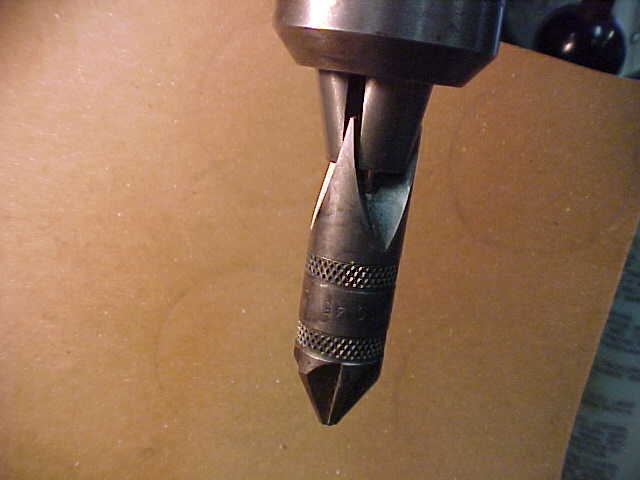
This shows an inside chamfering tool (really an inside/outside tool) held in a 1/2-inch drill press chuck. While the body of the tool is 5/8-inch, the chuck will grip the centering rod of the outside chamfering tool. MY DRILL PRESS IS EQUIPED WITH A VARIABLE SPEED DRIVE THAT ALLOWS THE PRESS TO RUN VERY SLOWLY, DON'T TRY TO USE ANY OF THESE TOOLS IN A HIGH SPEED PRESS!!!!!!!! These tools were designed to be turned by hand and should only be run at low speeds. They work well in variable speed hand held drill motors and battery operated screwdrivers.
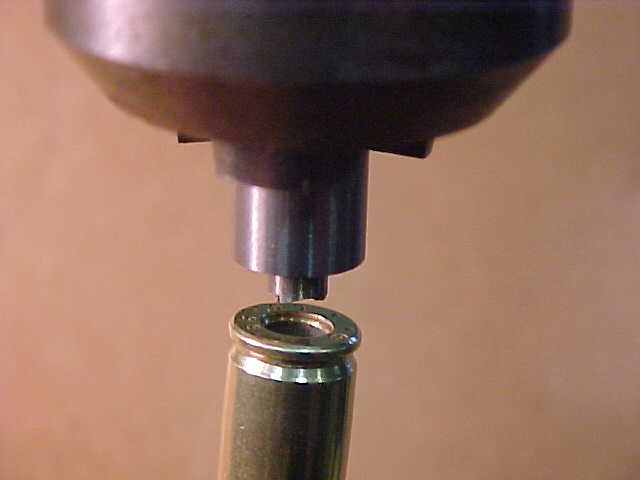
This tool is a cutter that squares the inside corner(s) of the primer pocket and cuts the floor of the pocket to a uniform depth. It is shown mounted in a drill press chuck.
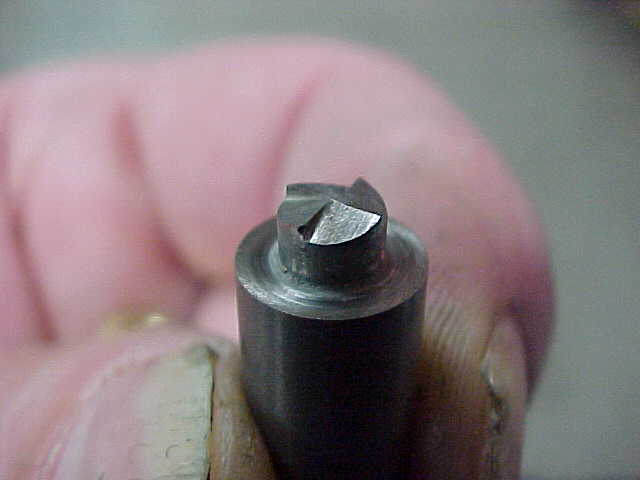
Notice that the tool cuts only on the end, not on the sides. This tool will NOT increase the inside diameter, nor remove a military crimp, of the primer pocket. It will insure that the pocket is square and that all of the uniformed cases have pockets of exactly equal depths. Doing this makes the ignition of the priming compound and hence the powder much more consistent and eliminates the possibility of a "high" primer that could cause a slam fire.
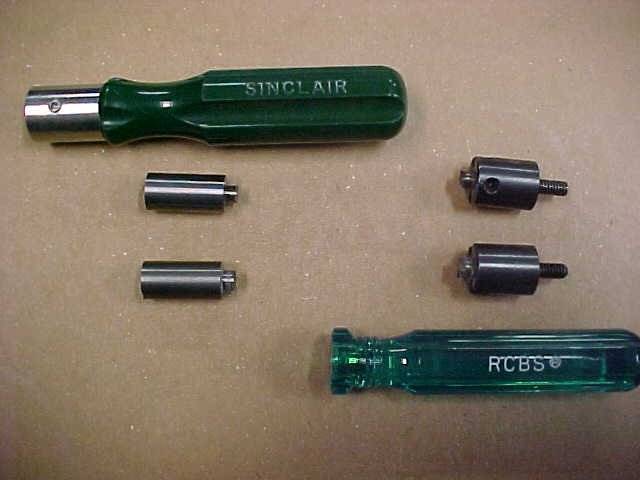
Above are examples of pocket uniformers by Sinclair and RCBS. Of the two, the Sinclair is clearly superior.
The Sinclair cutters, Large and Small, are solid carbide, while the RCBS cutter has a cutter, in a steel cylinder, held in place with a set screw. The cylinder has a screw extending out the rear that fits the handle, and this screw can push the cutter out of the cylinder. This is a bad design, as the pocket depth will vary as the cutter moves. The Sinclair unit is one-piece, so the dimensions, and the cutting depth, will never change. Both manufacturers supply a handle for hand use, and both styles of cutting tools can be rotated, slowly, with a power tool.
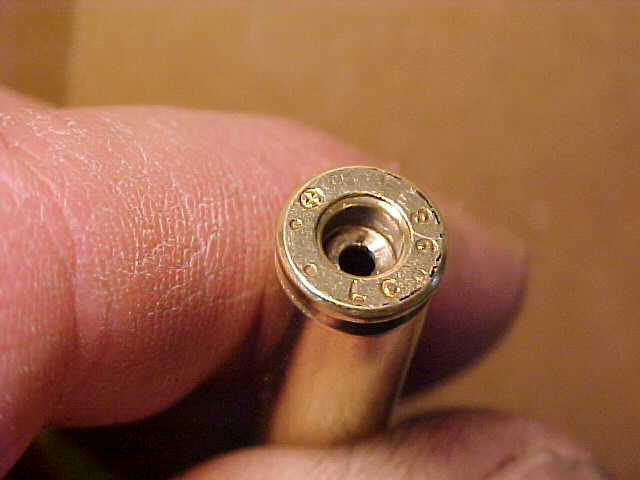
This is a "uniformed" primer pocket.
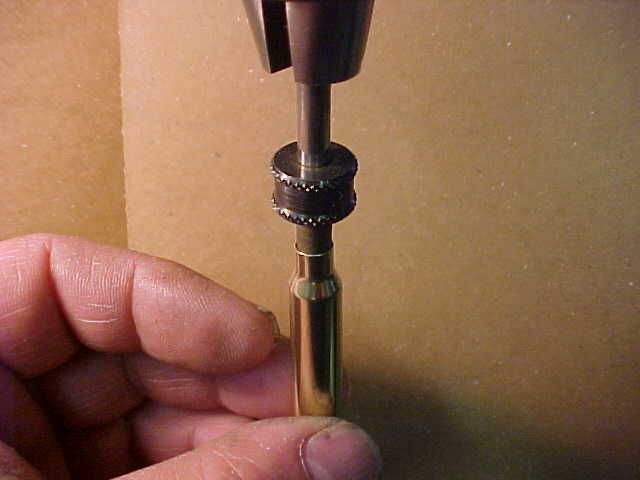
This tool, also held in a SLOW speed drill press, "de-burrs" the inside of the flash hole. Flash holes are normally "punched" from the outside and a large lip or burr is created on the inside of the case. This tool is simply a tapered drill (actually a center drill) that makes a nice counterbore on the inside of the case. The tool shown has an adjustable stop that enters the case mouth and serves to center the tool as well.
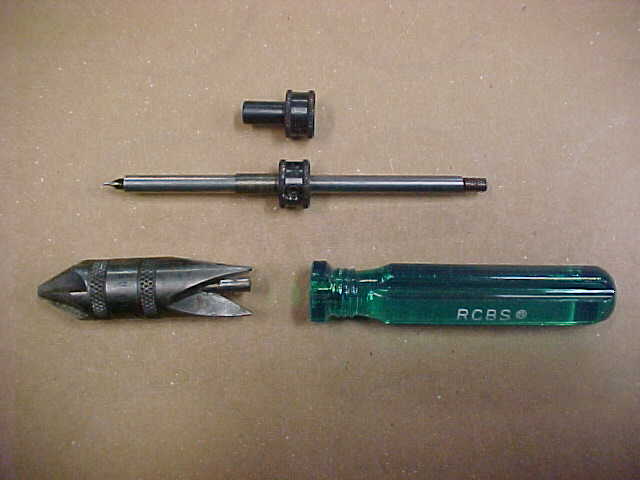
This time the RCBS design is the best I have found. Not shown is the Sinclair tool. It has a nasty habit of clogging with brass cuttings and is a bear to unclog. However, Sinclair provides a "one size fits all" adjustable stop/center. Shown above is an RCBS tool with a 22 cal. stop/center installed and a 6.5mm stop/center above. If you intend to de-burr 22 cal. cases, buy a tool for some other caliber, as the centering feature is not required for 22 cal, you can simply install a XX cal, stop/center upside down and use it as a stop only.
So, what improvements can you expect by incorporating these steps into your reloading process?
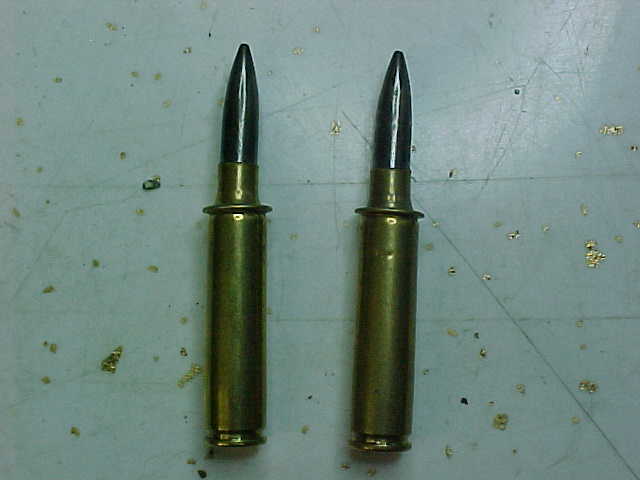
Well, if you chamfer the inside of the mouth, you won't end up with reloads like this!
The last two steps, the primer pocket and the flash hole work, made a fantastic difference when we were shooting 30-06 in competition, in fact, it was the difference between winning and losing matches.